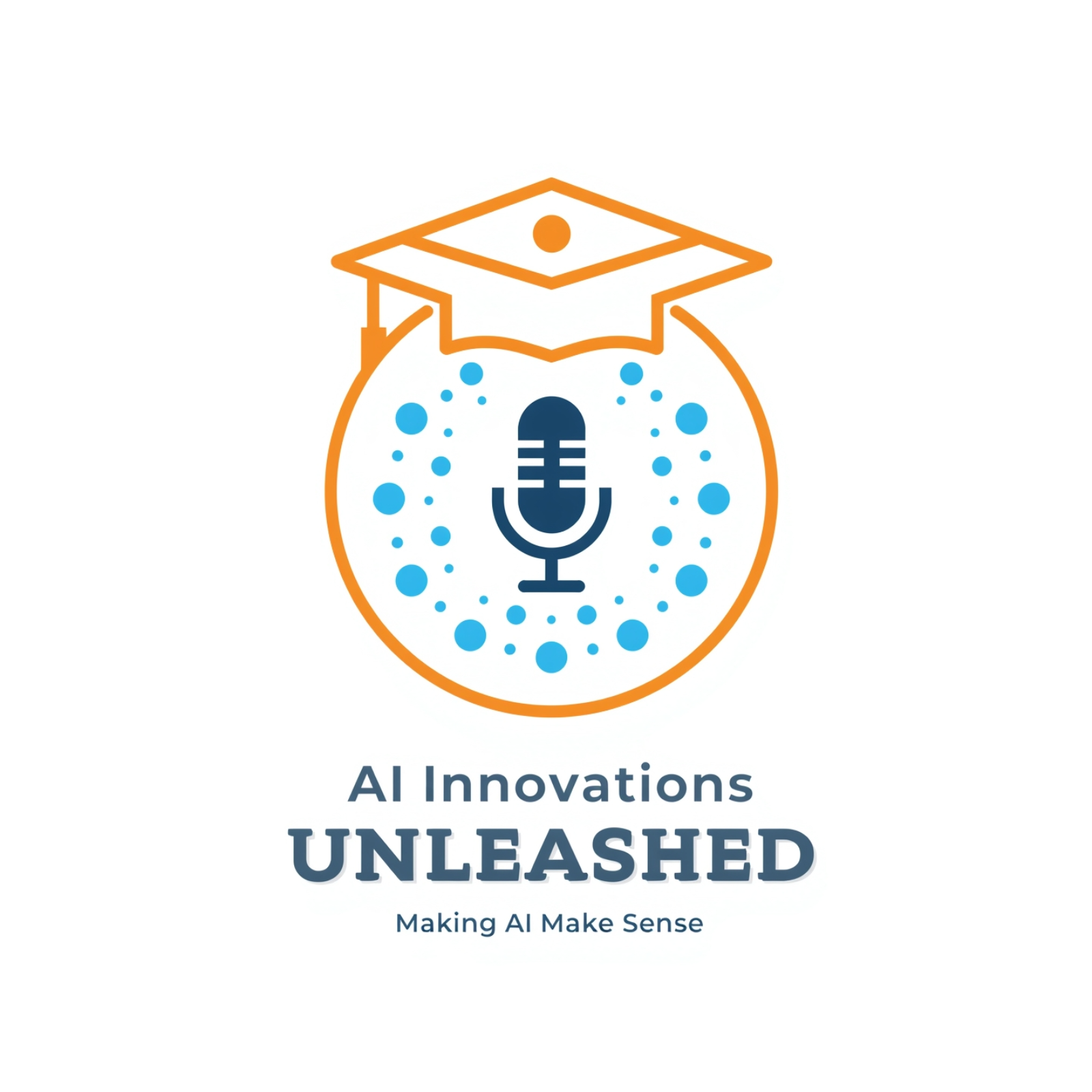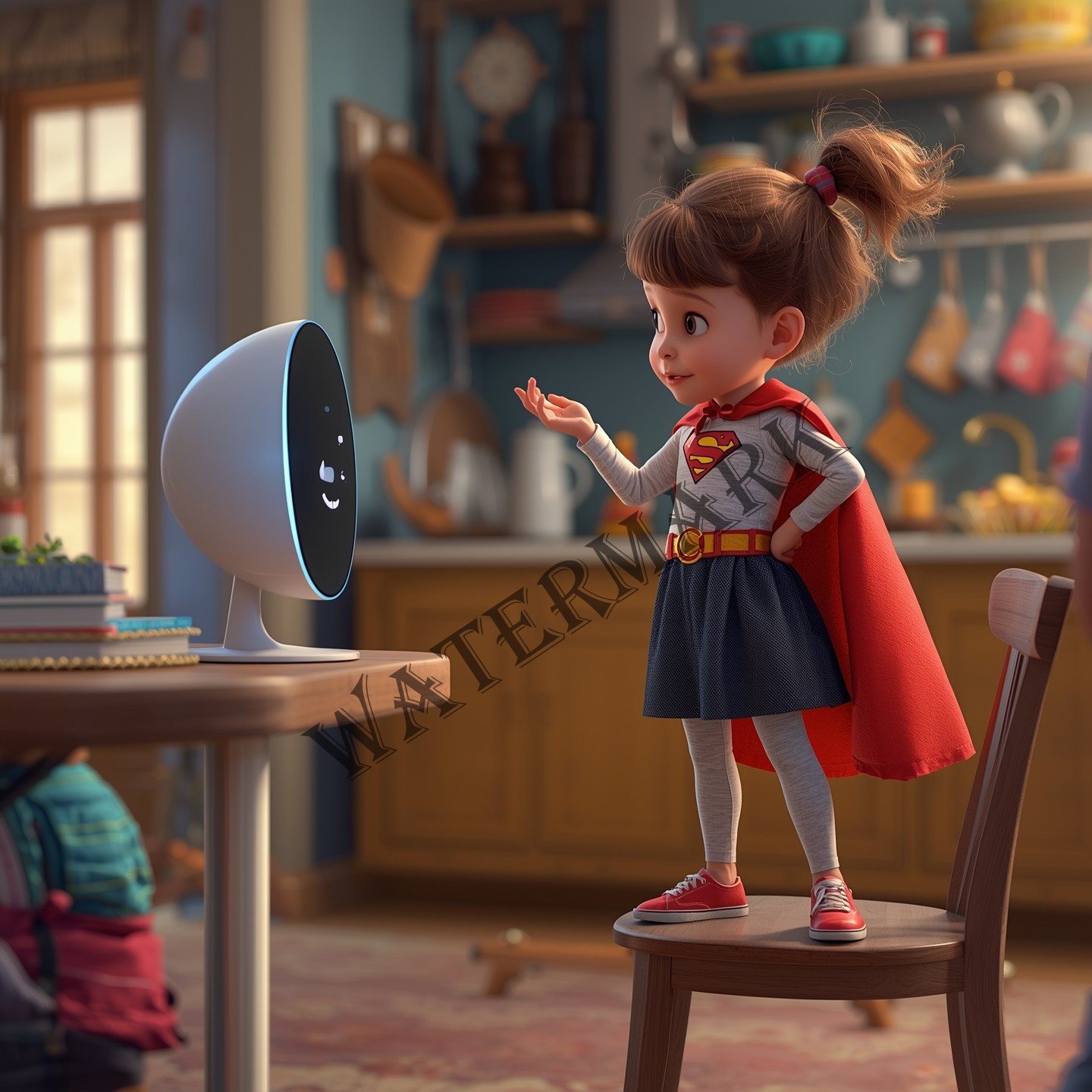AI Innovations Unleashed: The Wonder Years (Ages 2–5)
AI Innovations Unleashed: The podcast for parents navigating the new AI reality. Join Dr. JR and guest expert Dr. Jim Ford as they launch the “AI Through the Years” series with Episode 1: The Wonder Years of AI and Toddlers: How to Set Boundaries for Voice Assistants and Smart Toys (Ages 2-5). Discover the hidden AI in your home, from voice assistants and smart toys to YouTube algorithms. Discover the potential impact of conversational AI on the language development and cognitive skills of toddlers. Get practical, evidence-based guidelines for setting privacy boundaries and teaching AI literacy to preschoolers. This episode is essential for parents concerned about screen time, data collection, and raising resilient humans in an AI-first world. #AIParenting #ToddlersAndAI #VoiceAssistants #ChildDevelopment #AIforKids #DigitalWellness

“AI Innovations Unleashed: Your Educational Guide to Artificial Intelligence”
Visit: AI Innovations Unleashed Blog
Welcome to AI Innovations Unleashed—your trusted educational resource for understanding artificial intelligence and how it can work for you. This podcast and companion blog have been designed to demystify AI technology through clear explanations, practical examples, and expert insights that make complex concepts accessible to everyone—from students and lifelong learners to small business owners and professionals across all industries.
Whether you’re exploring AI fundamentals, looking to understand how AI can benefit your small business, or simply curious about how this technology works in the real world, our mission is to provide you with the knowledge and practical understanding you need to navigate an AI-powered future confidently.
What You’ll Learn:
- AI Fundamentals: Build a solid foundation in machine learning, neural networks, generative AI, and automation through clear, educational content
- Practical Applications: Discover how AI works in real-world settings across healthcare, finance, retail, education, and especially in small businesses and entrepreneurship
- Accessible Implementation: Learn how small businesses and organizations of any size can benefit from AI tools—without requiring massive budgets or technical teams
- Ethical Literacy: Develop critical thinking skills around AI’s societal impact, bias, privacy, and responsible innovation
- Skill Development: Gain actionable knowledge to understand, evaluate, and work alongside AI technologies in your field or business
Educational Approach:
Each episode breaks down AI concepts into digestible lessons, featuring educators, researchers, small business owners, and practitioners who explain not just what AI can do, but how and why it works. We prioritize clarity over hype, education over promotion, and understanding over buzzwords. You’ll hear actual stories from small businesses using AI for customer service, content creation, operations, and more—proving that AI isn’t just for tech giants.
Join Our Learning Community:
Whether you’re taking your first steps into AI, running a small business, or deepening your existing knowledge, AI Innovations Unleashed provides the educational content you need to:
- Understand AI terminology and concepts with confidence
- Identify practical AI tools and applications for your business or industry
- Make informed decisions about implementing AI solutions
- Think critically about AI’s role in society and your work
- Continue learning as AI technology evolves
🎓 Visit: AI Innovations Unleashed Blog
Subscribe to the podcast and start your AI education journey today—whether you’re learning for personal growth or looking to bring AI into your small business. 🎙️📚
This version maintains the educational focus while emphasizing that AI is accessible and valuable for small businesses and professionals across various industries, not just large corporations or tech companies.
Your high school junior just wrote their college essay. It’s polished, compelling, and reveals deep self-reflection. But you know they used ChatGPT. Do you say something, or is this just how college applications work now? Dr. JR, the Doctor of AI, and systems expert Dr. Jim Ford tackle the highest-stakes phase of AI parenting: ages fourteen to eighteen.
We dissect the college admissions AI dilemma, explore the rise of AI romantic companions among lonely teens, and discuss career preparation when no job is truly AI-proof. Learn why integrity matters more than grades, how to have the mental health conversation when AI is filling social voids, and what your final conversation should be before your teenager launches to adulthood.
What You’ll Learn:
- The college essay authenticity crisis and how to navigate it ethically
- Why AI companions are appealing to teenagers and when they become concerning
- Career preparation strategies for an AI-augmented workforce
- How to teach advanced AI literacy and critical thinking
- The autonomy-accountability balance in the final years at home
- How to handle deepfakes, academic integrity crises, and mental health concerns
Action Steps (Try This at Home):
- Have the integrity conversation about AI use in schoolwork
- If college-bound: Discuss your family’s values around AI and college essays
- Assess career readiness: Are they building human skills and AI literacy?
- Have the trust conversation if they’re launching to adulthood soon
Keywords: AI Parenting, High School AI Use, College Admissions AI, Teen Mental Health, Career Preparation, Academic Integrity, Digital Citizenship, AI Companions, Future of Work

🎙️ AI Innovations Unleashed: The Wonder Years (Ages 2–5)
Episode Title: The Wonder Years of AI and Toddlers: How to Set Boundaries for Voice Assistants and Smart Toys (Ages 2-5)
Synopsis:
Your toddler is talking to Alexa more than to you. Is this merely a convenience, or is it actually shaping their brain? Dr. JR, the Doctor of AI, and systems expert Dr. Jim Ford delve into the crucial AI foundations being laid between the ages of 2 and 5.
We dissect the news of AI partnerships with major toy companies, such as Mattel and OpenAI, and discuss the developmental impact of conversational AI on language and critical thinking. Learn why an AI is not a good language partner and how to address privacy fears surrounding recorded data.
What You’ll Learn:
- The difference between AI convenience and dependency.
- Why toddlers treat voice assistants as people (magical thinking).
- Practical rules for creating your Family AI Policy.
- The importance of teaching your child that “Alexa is a machine made by people”.
Action Steps (Try This at Home):
- Audit Your Home AI: List every device that listens or learns.
- Set One Boundary: Implement a device-free zone (e.g., during dinner).
- Have The Talk: Explain simply what the AI is (a machine/tool, not a person).
📚 Updated APA Reference List (Verifiable Sources)
- Gallaga, O. (2025, October 8). Young Kids’ Screen Time Now Includes AI Chatbots, Parents Say. CNET.
- Launch Consulting. (2025). Mattel and OpenAI Partner to Bring AI Magic to Iconic Toys.
- Mattel. (2025, June 12). Mattel and OpenAI Announce Strategic Collaboration.
- McKinsey. (2025, January 28). AI in the workplace: A report for 2025.
- MDPI. (2025, July 12). Interaction, Artificial Intelligence, and Motivation in Children’s Speech Learning and Rehabilitation Through Digital Games: A Systematic Literature Review.
- MindWare. (n.d.). Early Learning Toys for Toddlers and Kids.
- PYMNTS. (2025, June 28). Barbie Gets a Brain: OpenAI Partnership Puts Conversational AI in Mattel Toys.
- ResearchGate. (2024, July). How a Child Learns to ‘Talk’ to a Smart Speaker: On the Emergence of Enlanguaged Practices.
- Shimabukuro, J. (2025, July 16). Chatbot: Impact on Early Learning 2025-2125. ETC Journal.
- Stanford Accelerator for Learning. (2025, February 27). The future is already here: AI and education in 2025.
- Taylor & Francis Online. (2025, May 14). Full article: Preschool Teachers’ Child-Directed Talk: Unlocking Opportunities for Language Learning and Knowledge-Building.
- UNICRI :: United Nations Interregional Crime and Justice Research Institute. (2025, July 17). Are Our Children Using AI Without Us Noticing?
- Children and Screens. (2025). AI’s Impact on Children’s Social and Cognitive Development | Ying Xu, PhD.
🔗 Additional Resources and Actionable Links
This list provides practical, non-academic resources for parents seeking further guidance on the topics discussed in Episode 1.
Family Policy & Digital Safety
- Creating a Family AI Policy: A simple, customizable template for setting boundaries on voice assistant use and smart toy interaction in the home.
- COPPA Compliance Guide: Information for parents on the Children’s Online Privacy Protection Act and what to look for regarding data collection from children’s apps and devices.
- Privacy Settings Checklist: A step-by-step guide to reviewing and adjusting privacy settings on common smart speakers (Amazon Alexa, Google Home, Apple Siri) to limit data storage and voice recording.
Developmental & Educational Resources
- Speech-Language Pathologist Recommendations: A list of activities and conversation techniques to encourage rich human-to-human language development, balancing the transactional nature of AI interactions.
- Screen Time Guidelines: Links to current recommendations from the American Academy of Pediatrics (AAP) and tips for applying screen time limits to voice-only AI interaction.
- Books for Kids on AI Literacy: Suggested titles for introducing young children (ages 3–5) to the concept that robots and smart devices are machines built by people and can sometimes be wrong.
Consumer Guidance
- Smart Toy Safety Review Sites: Independent consumer review sites that evaluate new AI-integrated toys based on privacy features, data security, and developmental appropriateness.
- Opting Out: Instructions on how to opt out of voice history recording and data retention programs offered by major tech companies.



Leave a Reply